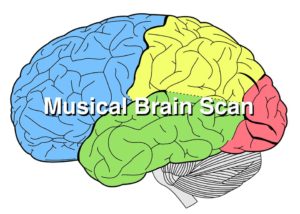- in Music by Bobby Owsinski
Sting’s Musical Brain Scan
 Do superstars hear music differently from the rest of us? Do they organize their musical thoughts differently? How much does this contribute to the physical dexterity? These are the things that neuroscientists want to know (as do the rest of us), and Daniel Levitin, a cognitive psychologist at McGill University, managed to go a bit down that path with Sting’s musical brain scan.
Do superstars hear music differently from the rest of us? Do they organize their musical thoughts differently? How much does this contribute to the physical dexterity? These are the things that neuroscientists want to know (as do the rest of us), and Daniel Levitin, a cognitive psychologist at McGill University, managed to go a bit down that path with Sting’s musical brain scan.
Levitin is the author of the excellent book This Is Your Brain On Music, which Sting was a big fan of. The singer skipped a soundcheck for a gig in Montreal to go for an MRI exam to check out just what his brain looks like on music. It turned out that there was a ghost in the machine that day so they didn’t get the info they wanted, but he was curious enough to return for a new scan at UC Santa Barbara at a latter date.
The study resulted in a paper in NeuroCase that probably won’t mean much to you unless you’re in that field. That said, it did discover that Sting identified certain pieces of music with others in an unexpected way, which may explain why he’s as creative as he is. According to Levitin, “Sting’s brain pointed us to several connections between pieces of music that I know well, but had never seen as related before.” For instance, Piazzolla’s “Libertango” and the Beatles’ “Girl” are both in minor keys and include similar motifs in the melody. Also, the Sting-penned “Moon Over Bourbon Street” showed strong connections in key, tempo, and swing rhythm with “Green Onions” by Booker T and the MG’s.
Is this a breakthrough study? No, it’s more of a quick experiment, since there wasn’t a control built in, and it lasted for a very brief period. However, it’s a great start to trying to better understand where our creativity comes from so that we can more easily trigger it at will. Maybe someday we’ll all have a musical brain scan as part of our musical training.

